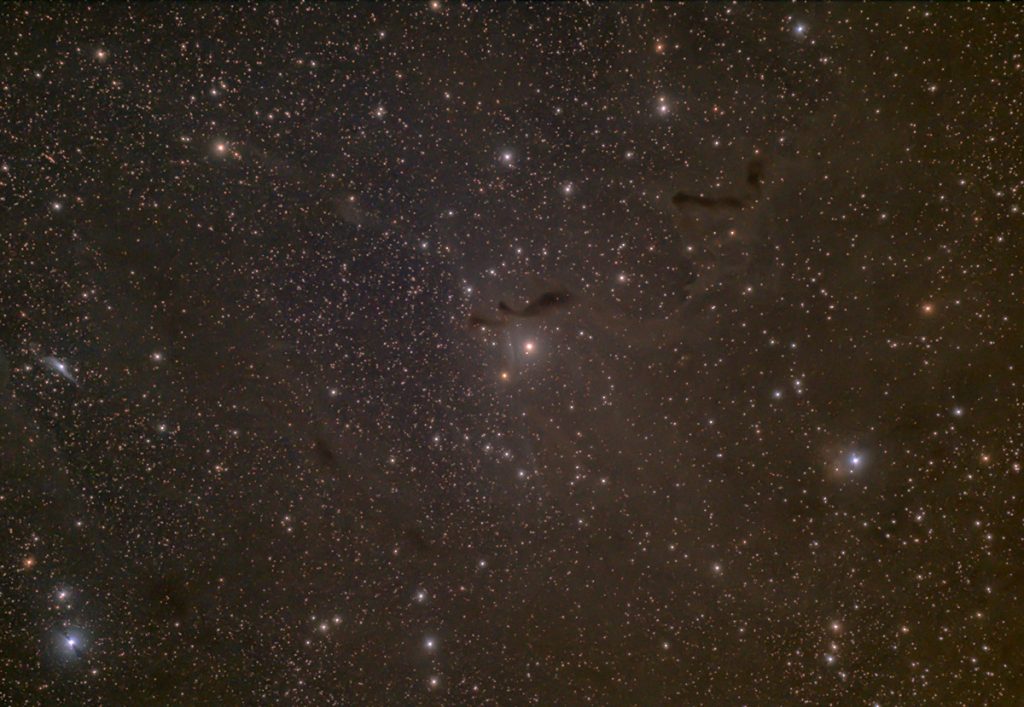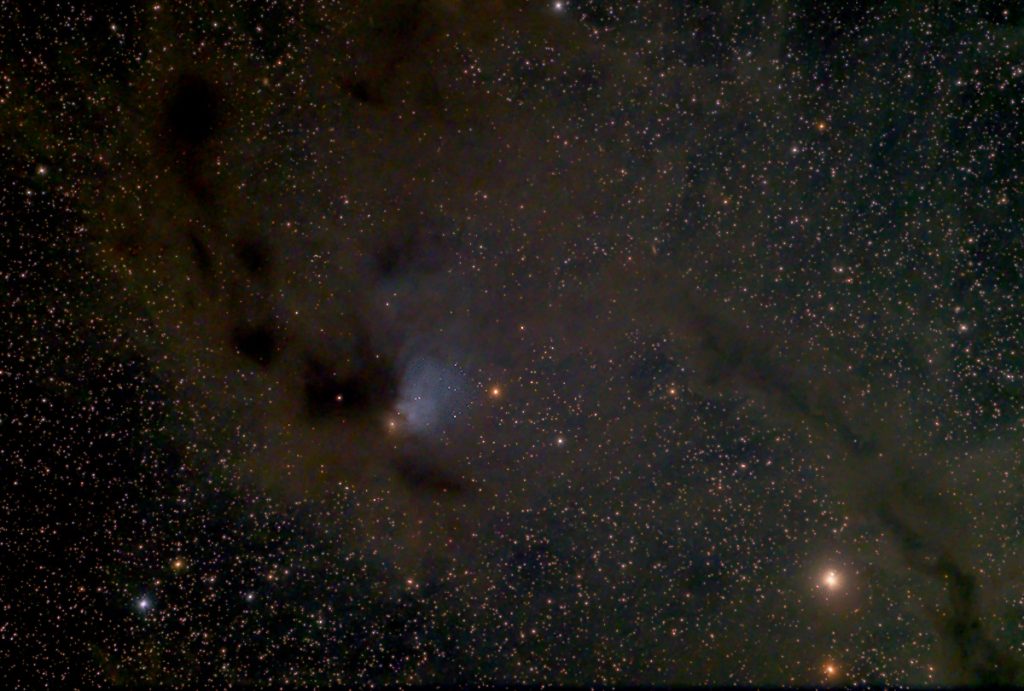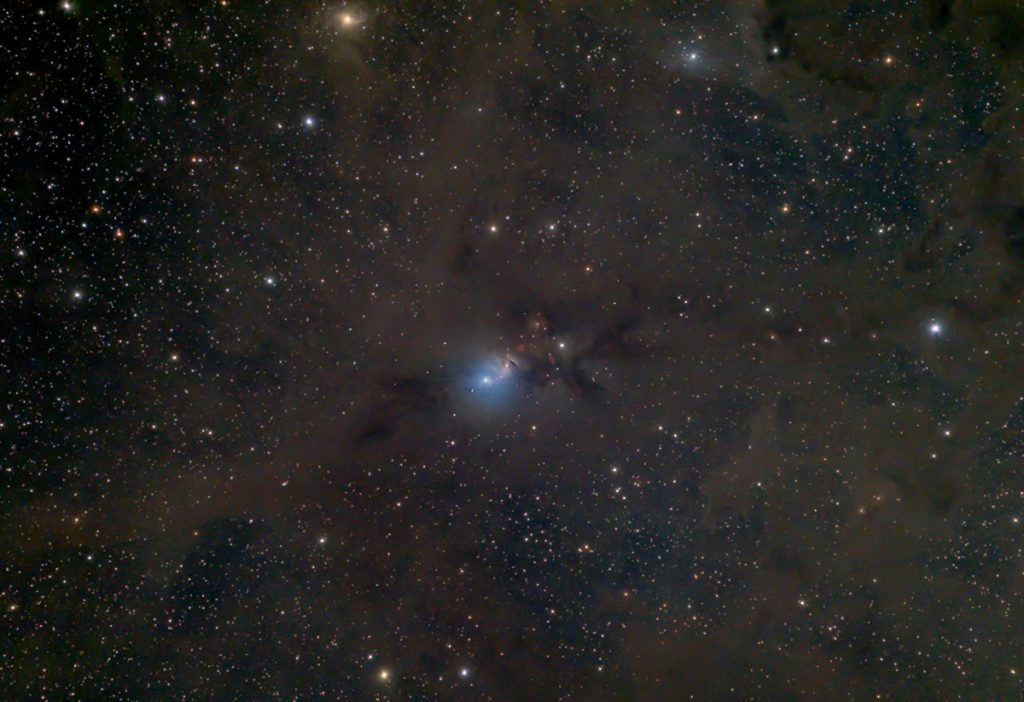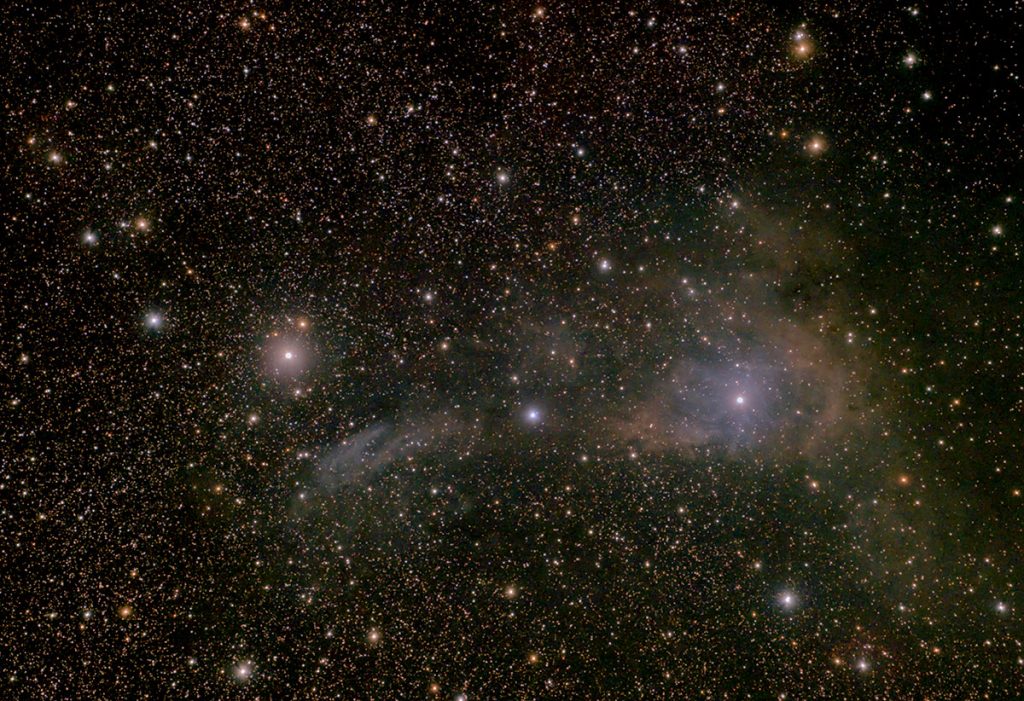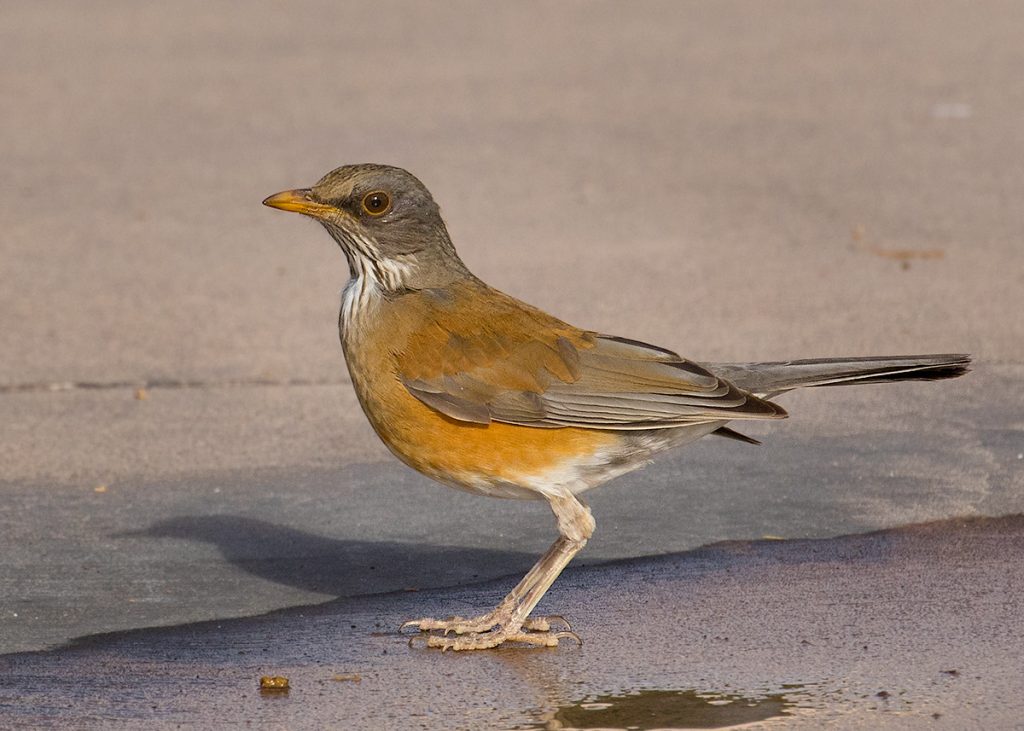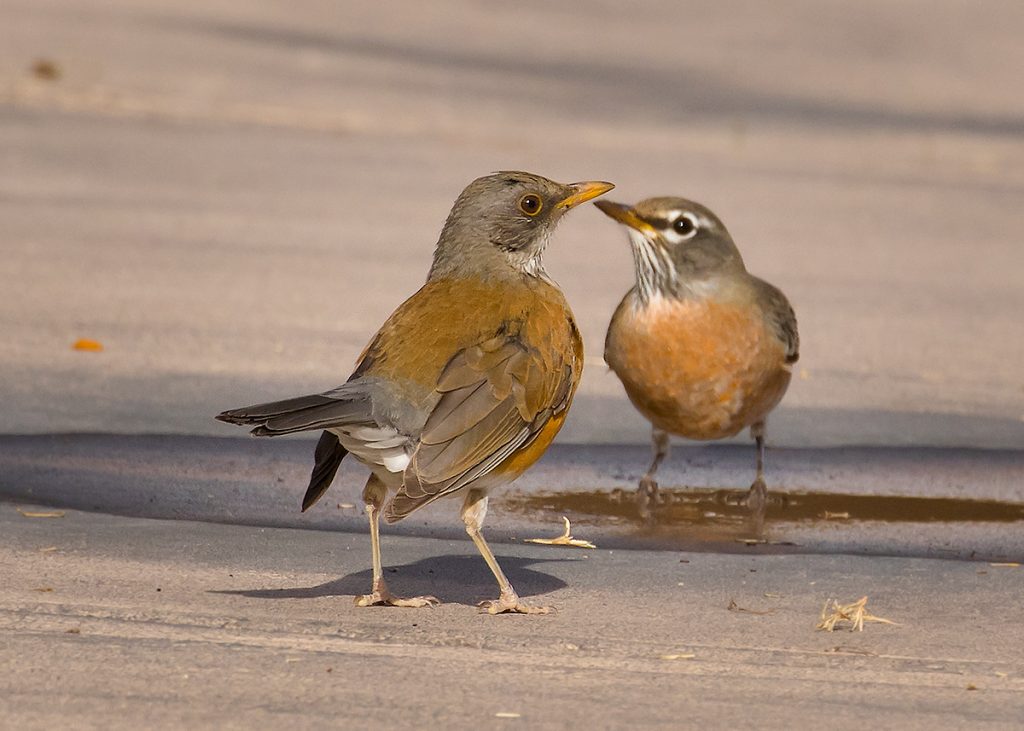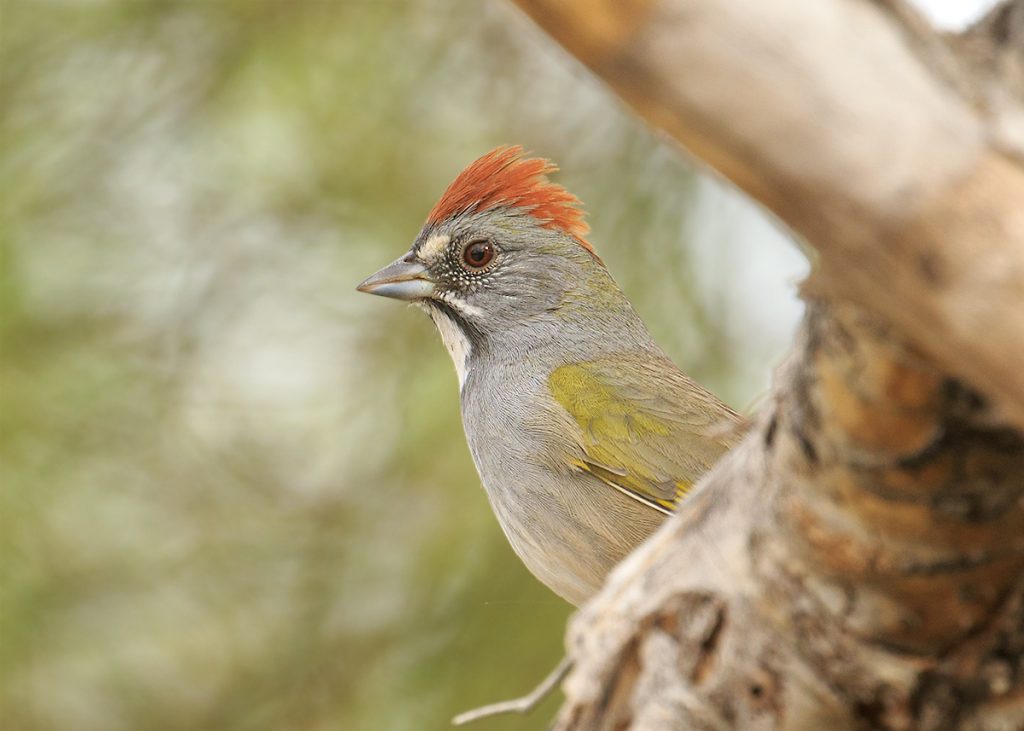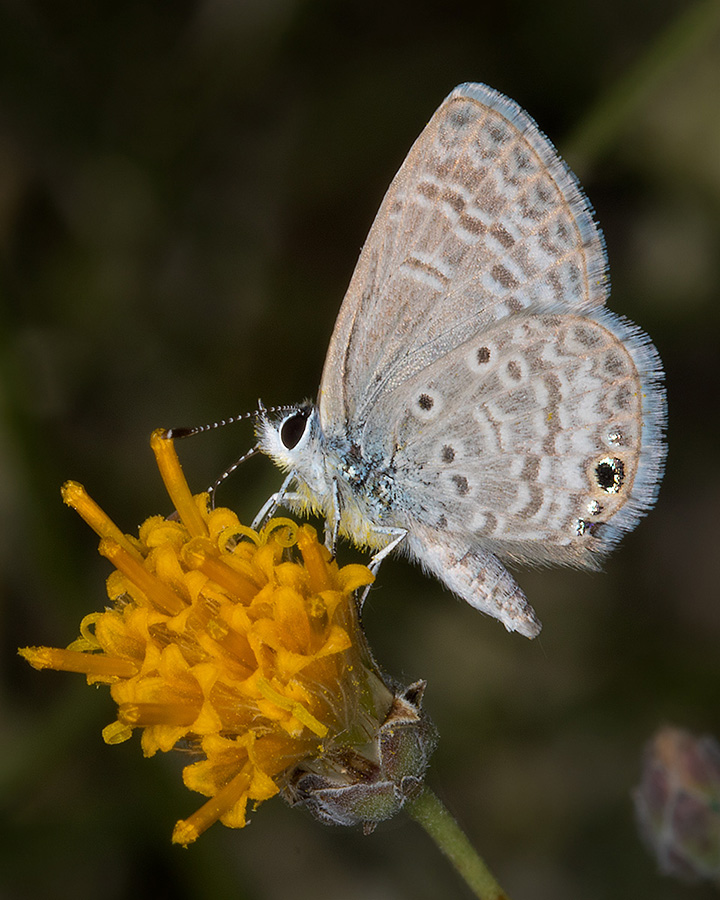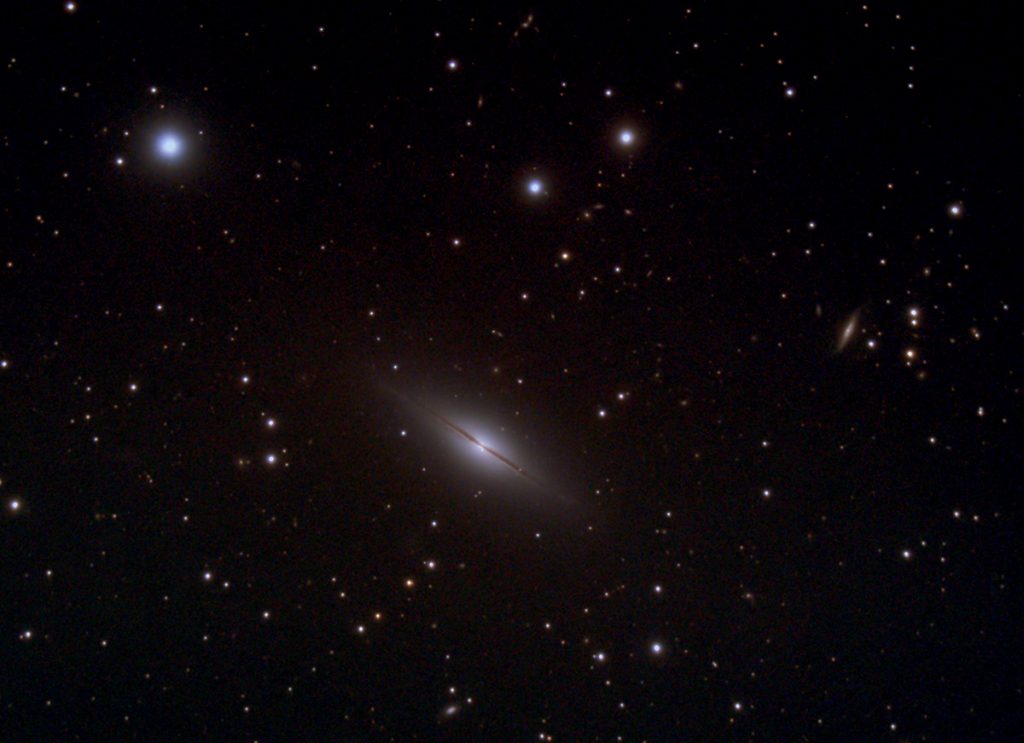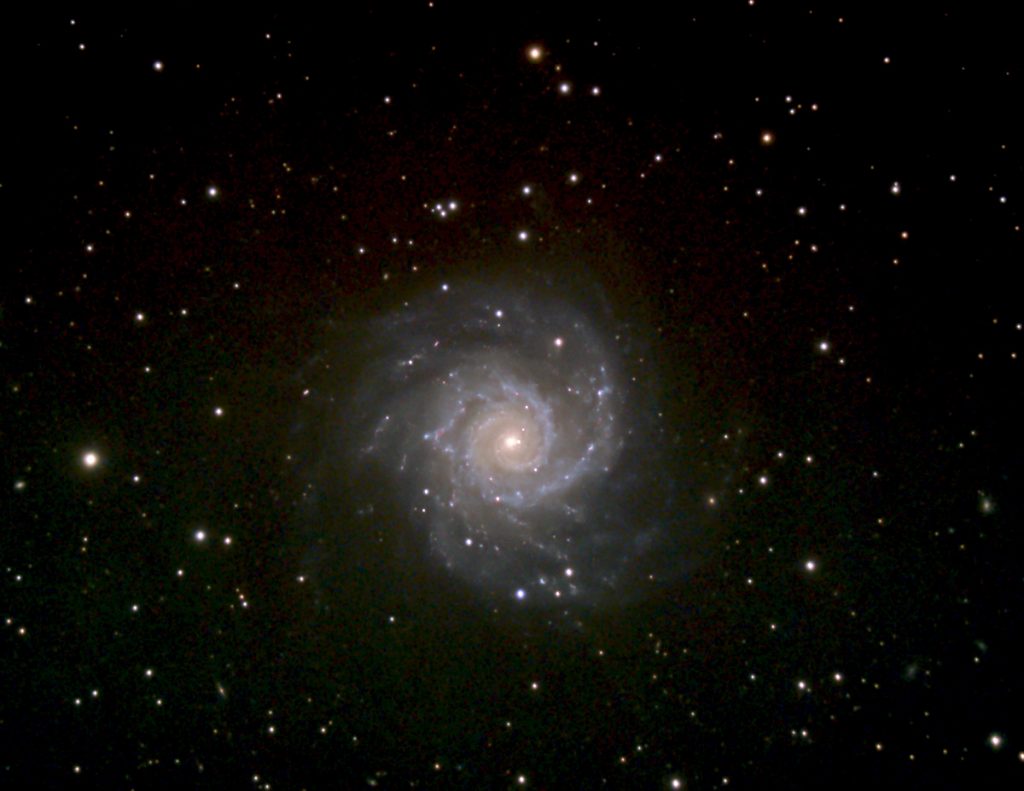For the past week I have been putting a lot of time into dark nebulas. There are hundreds of them listed in Stellarium but almost no photos anywhere online to see what they look like. I tried for a few of the better- known dark nebulas, these are the ones with some bright stars lighting up the clouds. They are difficult targets; the dust is dim and it is hard to get enough exposure. With the C8 (at f6.3) it is nearly impossible but with the 500 mm lens at f4 I can get one nebula done in a couple of nights if all goes well. Framing is hard too, I can’t see the clouds in the images, all I can see is areas with no stars, obscured by the dust. Anyway, I will post some of the results below. As always, right click on an image and open in a new tab for a larger view.
